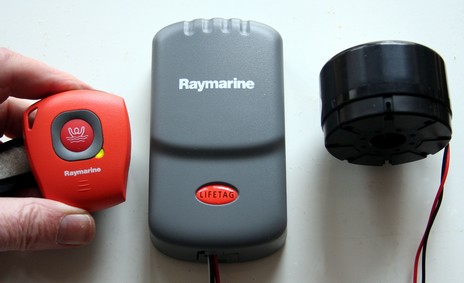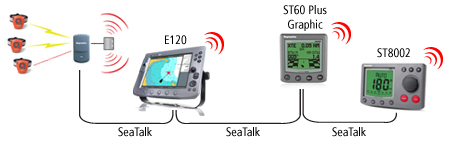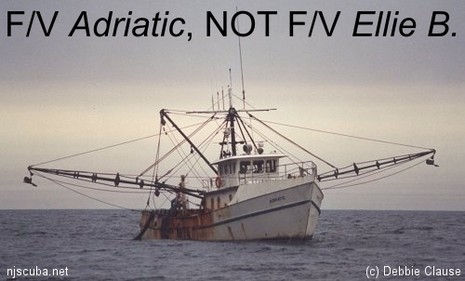Raymarine LifeTag MOB system, well done!

Raymarine introduced this LifeTag man overboard system last February, but then couldn’t actually start shipping it in the U.S. until November. These things happen, but it does tend to diminish a new product’s reputation. Well, I’ve been testing LifeTag, it works exactly as promised, and it deserves attention. One thing I particularly like is that—unlike some other safety gear, EPIRBs and life rafts come to mind—you don’t have to worry if it will function when you need it. LifeTag is what might be called an “alarm on failure” system; once on, the easy-to-tote tags regularly communicate (via ZigBee) with the base station, alarming if the connection breaks, or if just the tag breaks. The basic stand-alone system shown above was trivial to install and learn. The buzzer sounded if I wandered too far away or pushed the “help!” (or “wake up, matey”) button, plus you can disarm the alarm with the tag, and the multicolor LED tells you what’s going on. All nice, but even better is hooking LifeTag into a Raymarine SeaTalk network. More on that, and other considerations, tomorrow.














How far is “too far”? And does it depend on what the radio signal must traverse? Like “too far” within line of sight is 200′, but “too far” if the unit is below decks and there is some carbon in the structure might be 20′?
Hey Apple announced their delicious new iphone yesterday at the Macworld conference, and it won’t be available until at least june…
Eliboat, spam is so not cool. Hopefully your comment will be deleted. Now, back on topic.
I dont have any trips planned this summer, just day trips around Boston. But before my next long trip I would consider this product a must have. Does it interface to any other products (via NMEA?) to do things like create a MOB Waypoint on activation?
Ben et al., I’m not really a fan of these “proximity” alarms especially when your crew trots off to the bar with their oilskins on and you’re trying to catch a nap or something. I much prefer a 121.5 MHz system like the SeaMarshall with the onboard receiver since it can be activated by immersion or manually. And the 121.5 signal is very useful once the victim is in the water. I understand that the USCG is “unrecognizing” 121.5, however, until someone comes out with a 406/121.5 MHz immersion activated beacon, I favor 121.5 over a proximity system.
David, I think 121.5 will remain the standard for local area homing, and, yes, the weakness of proximity alarms is their lack of homing ability. As for crew wandering off the boat, that’s an operational issue, isn’t it? Kirwood, I think Eli was making the point that the iPhone, biggest tech event in some time, will not be available for a while, like the LifeTag, (except the LifeTag delay was not announced at introduction). Eli is not a spammer. Rus, the LifeTag triggers about 30′ from base station, or if it is blocked by something like water. More later.
From an interview with Alan Hindley regarding requirements for the next Volvo race:
The only other significant addition to the Notice of Race and one that will be particularly resonant following the loss of Hans Horrevoets in the last race, is the inclusion of a new man overboard alerting system as recently featured on the TV series Dragon’s Den. The Mermaid-id from First Light Solutions has a couple of significant advantages over existing systems in that it is passive – the current units worn by crews work on a repeated proximity radio transmission whereby if a crew is no longer within a certain distance of the base station an alarm is sounded. The problem with this is that the units worn by crew are always on and regularly run out of battery power. They also sound an alarm when a carbon fibre bulkhead lies between the crewman and the base station. The Mermaid id works with sonar requiring a through-hull fitting for the transducer, but has the additional advantage of recording the GPS position within 2 seconds of a MOB incident as well as the ID of the wearer. “The US Coastguard did a study that showed that 95% of people will be found if you record their GPS position,” says Andy Hindley.
Not sure why Eliboat mentioned the iPhone in this thread, but since he did I will mention it is our plan to offer our very popular MacENC software on the new Apple iPhone. Of course it would be a special version optimized for the smaller screen and execeptional touch screen capabilities. Exciting times to be an OS X developer.
My wife and I sail mostly on the Chesapeake. Something like LifeTag or Mermaid-id are very atttactive to us. The LifeTag seems like a no-brainer if you have Raymarine chartplotter, etc like I do. I find a couple of Mermaid-id features appealing. Unfortunately it takes up limited space at the helm while I can just plug the LifeTag into Seatalk.
Quote “plus you can disarm the alarm with the tag, and the multicolor LED tells you what�s going on.”
When will designers realise that over 30% of adult males have some form of color blindness. Most commonly differentiation between red and green. Give us individual LED’s or at least use another combination like blue/red.
Also in direct sunlight most LEDs are almost impossible to see.
I just ran across this test of the Ray Lifetag on Youtube:
http://www.youtube.com/watch?v=CFmn1ZDH7_I&feature=related